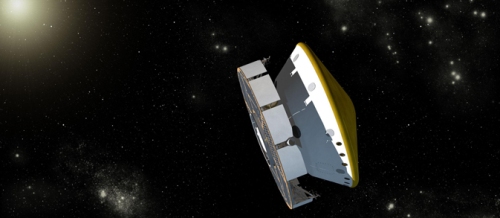The Mars Rover, named Curiosity, from NASA has begun its space research by monitoring the space radiation as part of its trip to Mars spanning eight months. The research findings of the rover will be helpful in planning for future human missions to Mars.
 This is an artist's concept of NASA's Mars Science Laboratory spacecraft during its cruise phase between launch and final approach to Mars
This is an artist's concept of NASA's Mars Science Laboratory spacecraft during its cruise phase between launch and final approach to Mars
The rover aboard Mars Science Laboratory (MSL) was launched on 26 November from Cape Canaveral, armed with the radiation assessment detector (RAD). The RAD is capable of monitoring high energy atomic and subatomic particles emitted by the sun, supernovas and several other sources. This radiation may cause harm to astronauts or any microbes in space or on the planet. The principal investigator of RAD from the Southwest Research Institute explained that the role of the RAD on the rover was that of a proxy for the astronauts inside the Mars bound spacecraft. He added that the instrument was located well within the spacecraft, similar to the way an astronaut is located.
Since the RAD is located deep inside the spacecraft, it is well protected by the other components present inside the MSL. However, the components inside the spacecraft sometimes emit secondary high-energy particles which prove to be more dangerous than primary particles. These measurements will help scientists decide whether the Mars’ Gale Crater is favourable for explorations by astronauts and if it supports microbial life. By this time (9 a.m on Dec 14) the rover will have covered 31.9 million miles of its 352 million mile journey. The first correction manoeuvre is scheduled during January 2012. The Mars mission is managed by the NASA Jet Propulsion laboratory.